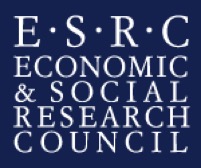Drivers of community perceptions of mining companies in Central Asia
Author: Rukhmina Imronshoeva, UCA Intern
It is hard to keep my eyes open as the dust is everywhere, sensitive to the smallest irritation. People have to shout to be heard because the noise of machines steals some of the words. Constant construction, huge machines and noise disturbance caused by the blasting of rocks are the signs that a mining company is in the full process of deposit extraction. People’s lives in the mining area are full to the brim with the exhaust fumes and noise from trucks and equipment, drilling and blasting, construction and other activities.
The prospective contribution of mining to Central Asian economies as a source of state revenue creates a strong political constituency in favour of developing the mining sector. The mining industry is an often-discussed topic due to its potential influence on the sustainability of marginalized communities. Most of the time resource extraction is the only way for states to improve the social welfare of people living in remote mountainous areas. However, whilst the contribution of the mining industry is vast in the economies of Central Asia, many companies still struggle to avoid conflict with local communities. Truthfully, there appears to be a rise in the number of conflicts as more foreign companies come to Central Asian lands. In recent years, there has been increasing demand for the mining sector in Central Asia to deliver sustainable development to maintain long-term benefits extracted from mining. Through mediation processes, it was established that local communities’ engagement and satisfaction are important for the success of mining operations (Liang Wang, 2016).
One of the general problems in the mining sector in Central Asia is a lack of interaction and dialogue between local communities and companies. This forms a negative perception of the community towards mining companies. The reason for it is the absence of interactional justice that makes locals feel ignored on their own land and creates a perception that the company lacks honesty and transparency. Moreover, practices of procedural and distributive justice are also lacking as people are not always involved in the decision-making processes and are not always compensated fairly for their losses. Another point worth noting is that sometimes the people of Central Asia, especially in rural areas where mining activities take place, are not open to working with foreign companies and would prefer the development of only state-owned companies. The isolated way of living in some parts of Central Asia has resulted in resistance by communities to the outside world and a distrust of foreign companies.
In order to understand the negative nature of community’s perceptions to mining in Central Asia, another factor to consider are demographic characteristics of the people. In Kyrgyzstan and Kazakhstan nomadic life is still preserved in many places. Mining poses an impending risk to a large number of nomadic peoples. Shift to the mining activity means that pastoralism will decline in its role in the Central Asian economy. Thus, being aware of their losses, pastoralists often don’t meet mining companies with open arms. The second group this is impacted by mining are women. Traditionally women are not directly involved in mining, therefore, the benefits are also not considered for them. Mining often provides employment to locals; however, women are often not part of the beneficiaries. Last but not the least, is an older generation of locals who remember mining operations during the Soviet Union when mining was purely a state activity and was directed to achieve a social contribution to local communities. The past socialist experience results in constant demand from communities and lays a serious expectation towards mining companies. This perception makes it difficult for mining companies to operate in these regions, where the scope of their responsibility is in question. In this manner, different groups of society perform a significant role in the formulation of perceptions towards mining companies that might constrain their work or contribute to conflicts. Often, these nuances are missed by the companies.
As the company starts its operation, other reasons for community dissatisfaction may emerge. A significant amount of work investigates the negative attitude of locals to mining as a result of environmental damages, labor shortages for other economic activities and unfair distribution of the mining outcomes. However, sustainable development starts in the early stages of the mine operation when the locals’ knowledge about the company is limited. It was found that Canadian mining companies that worked with Kyrgyz communities from the beginning resulted in benefits and built a communication bridge with locals (Karpaeva n.d.).
However it is also important to remember that sustainable development bears the idea that current generations meet their needs without compromising the opportunities of future generations (Liang Wang, 2016). Conflicts that arise between mining companies and local communities are often focused on current problems, but consideration should be given to future generations as well.
Further Reading:
Liang Wang, K. A.-O. (2016). Eliciting Drivers of Community Perceptions of Mining Projects of Mining Projects through Effective Community Engagement . China: MDPI
Karpaeva, A. (n.d.). The Mining Sector Capacity Improvement in the Kyrgyz Republic through Building Effective Cooperation among Governments, Mining Companies and Local Communities. Bishkek: State Committee of Industry, Energy and Subsoil Use.
Tiainen, R. (2012). Lack of Dialogue and Poor Governance Resulting in Local Resistance. Mining in the Chatkal Valley. Joensuu, Finland: University of Eastern Finland.




